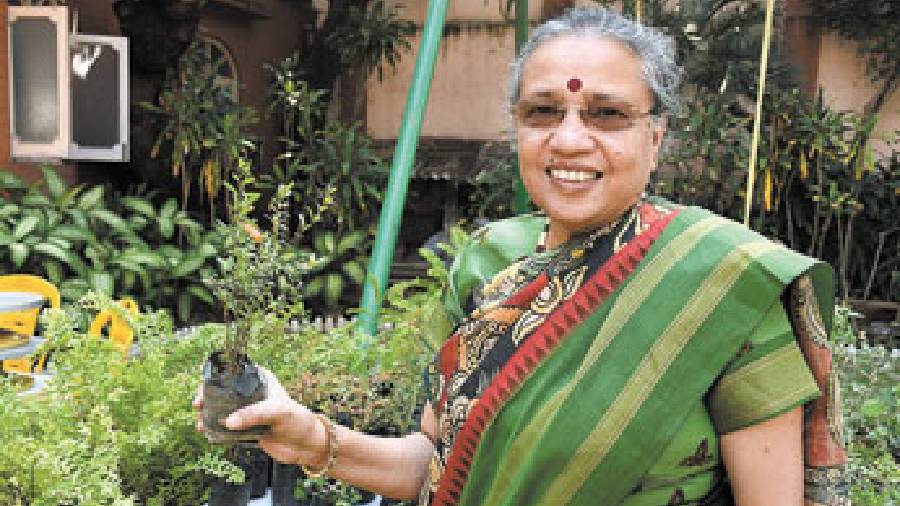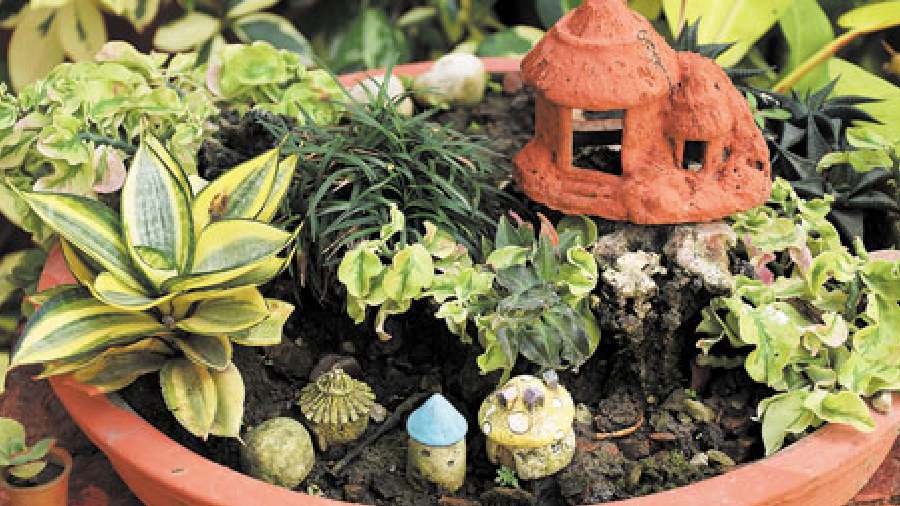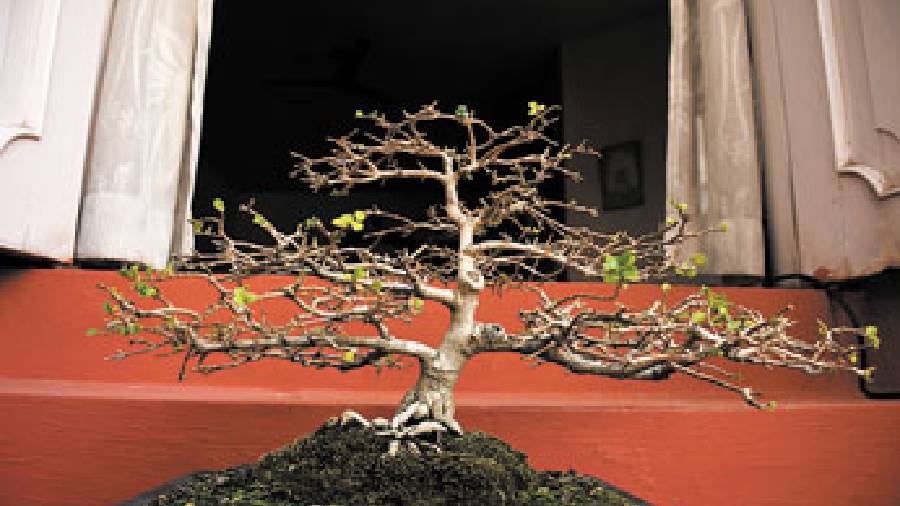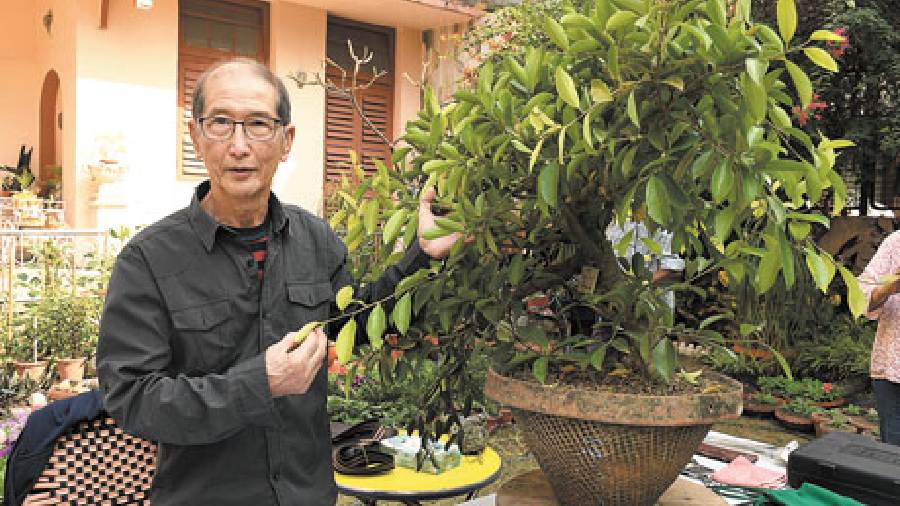The Jyotirmai Kolkata Bonsai Chapter conducted a unique demo and workshop by international bonsai master Peter Chan on December 29. Peter Chan is a self-taught Bonsai artist who received his first training from IIT Kharagpur as a professional electrical engineer. He later quit his job to pursue his hobby full-time. During the demonstration and workshop organised by Parveen Talwar at her place in Dover Park, Chan provided the audience with details on specific methods of producing these miniature trees. Additionally, he presented live demos on various bonsai trees.

Peter Chan demonstrates how to trim a bonsai
Peter Chan is a world-renowned bonsai master who has written books such as Bonsai Masterclass, Choosing and Growing Bonsai, and the Reader’s Digest book Bonsai Masterclass. On the sidelines of the workshop, t2 sat down for a chat with Peter Chan.
How did you get into the art of bonsai-making?
As you know, I’m from IIT Kharagpur. I went to IIT Kharagpur last week. I was the guest of honour at the convocation. I graduated from IIT KGP in 1962. I’m 82 years old. I studied electrical engineering, and after the Indo-China war in ’62-’63, when I couldn’t get a job, I went to the UK and got a job in electrical engineering. After getting married, I had my first home. In my apartment, there was not much space for a garden. That’s why I had to grow everything in pots. Bonsais are plants that thrive well in pots. I started experimenting. No one taught me; I’m a self-taught bonsai artist. With an inquiring mind, I discovered that if you do certain things to plants, they grow in specific ways. You shape it in certain ways, they will look like these trees that the Chinese have been growing for thousands of years. So that is how I learned — by looking at pictures, I learned how to make bonsai.
Do you find any connection between your previous job in electrical engineering and your current profession of making bonsai?
I can see the connection between engineering and bonsai because you can figure out how to solve a problem with engineers. I asked myself the same question when I saw these plants — how are they doing it? There must be some way, some reason. So if you deduce and find the solution, you can figure out how these plants are made. All my bonsai knowledge is from experimenting. Any study is to teach your mind how to think. That’s all education is all about.
What is something unique about bonsai that caught your interest?
Bonsai is a plant that is about creating something beautiful. Also, when you have plants in your house, it gives you peace of mind, and you feel nicer. Any type of plant has the effect of calming your mind and body. It is also good for the eyes. Bonsai is good for the soul. It teaches you patience.
Is there any particular bonsai you would like to mention?
In my nursery (Heron’s Nursery, UK), I have one 500-year-old tree. It came from Japan. It came about 75 years ago to the UK, and I still have that plant. So that tree must be now 575 years old. You grow it, it’s like a child. Bonsai teaches you patience as well.

HOST SPEAK: Parveen Talwar, who hosted the bonsai workshop at her home, told t2: “I love plants, fitness, and nature. I started bonsai 32 years back. We met Peter last year in London, and now we work with him. He’s visiting, so I called him home.”

Rashmi Gupta, one of the founding members of the Jyotirmai Kolkata Bonsai Club.




Carmona bonsai
Tips by Peter Chan on how to make your bonsai more spectacular:
- Remember that less is more in bonsai.
- Bonsai trees need to be trimmed slightly in the outline to get a proper dome shapel
- Clean the bark of junipers to reveal its excellent red colour insidel
- Avoid inverse tapering due to too many roots and branches; they can create a problem

ON DISPLAY: The garden of Talwar’s house in Dover Park was a sight for sore eyes — different plants of different species were seen on display. Several guests brought their bonsai plants for the workshop. Some varieties of bonsais that were spotted are Juniper, Sandpaper plant, Carmona, Hawthorn, Malpighia, Thuja, Ficus, pomegranate etc.
